The percentage of 2015 high school graduates who are prepared for college is modestly above levels of prior years, according to a new report by the ACT testing organization.
In Colorado, 26 percent of 2015 graduates met all four of the benchmarks the testing group uses to determine college readiness. The figure was 25 percent in the three previous years. Nationwide, about 28 percent of the nearly 2 million students who took the test met all four benchmarks. That’s up from 25 percent in 2011.
Across the country, 59 percent of 2015 grads took the ACT test, so the report doesn’t evaluate college readiness for all students. In Colorado, all high school juniors are required to take the ACT test, whether or not they plan to attend college.
In 2014, the average ACT composite score for Colorado juniors was 20.3 out of a possible 36. (Search our database for 2014 district and high school results.) Scores for 2015 will be released this fall along with CMAS and PARCC testing results.
In Colorado, college readiness is drawing renewed attention because of a testing law passed by the 2015 legislature. That measure requires that an aligned pair of college and career readiness tests be given in the 10th and 11th grades, and that the 10th grade exam be used to meet federal testing requirements instead of the PARCC tests. That change requires federal sign-off.
The new law also requires that the two tests be put out for competitive bidding, so continued used of the ACT isn’t guaranteed. The state Department of Education expects to choose a testing provider in November.
The ACT’s annual Condition of College & Career Readiness report goes beyond composite scores and uses a variety of data to estimate college readiness. Here are some of the key findings from this year’s study. (Graphics provided by ACT.)
The benchmarks
ACT defines readiness as the knowledge and skills students need to enroll and succeed in credit-bearing first-year courses at colleges or trade and technical schools without the need for remedial classes.
The chart shows the minimum scores needed on the ACT subject tests to indicate a 50 percent chance of earning a B or higher or a 75 percent chance of earning a C or higher in credit-bearing first-year college classes.

How Colorado students performed
The first chart illustrates the percentages of Colorado and U.S. students who met individual benchmarks in the four subjects covered by the ACT test — English, reading, math and science — as well as the percentages for the four subjects combined.
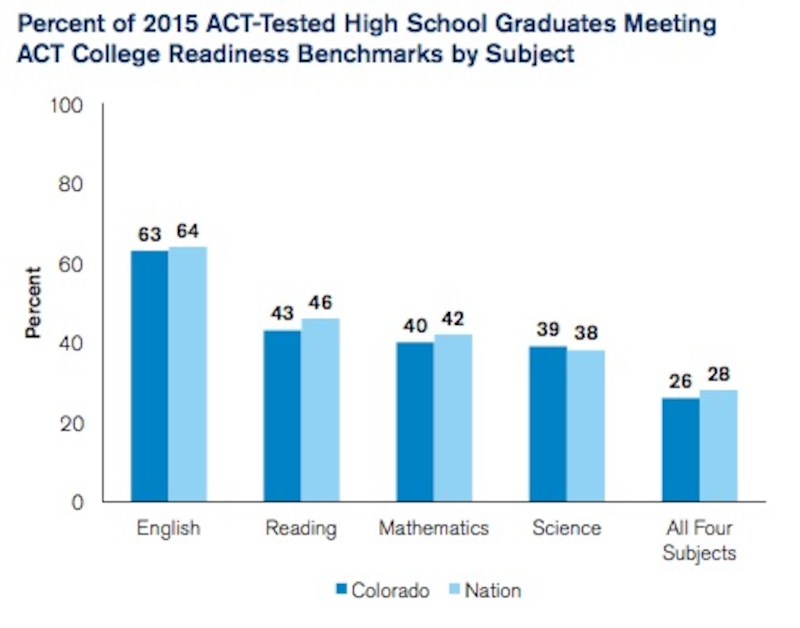
Percentages of readiness have remained relatively flat over the last five years.
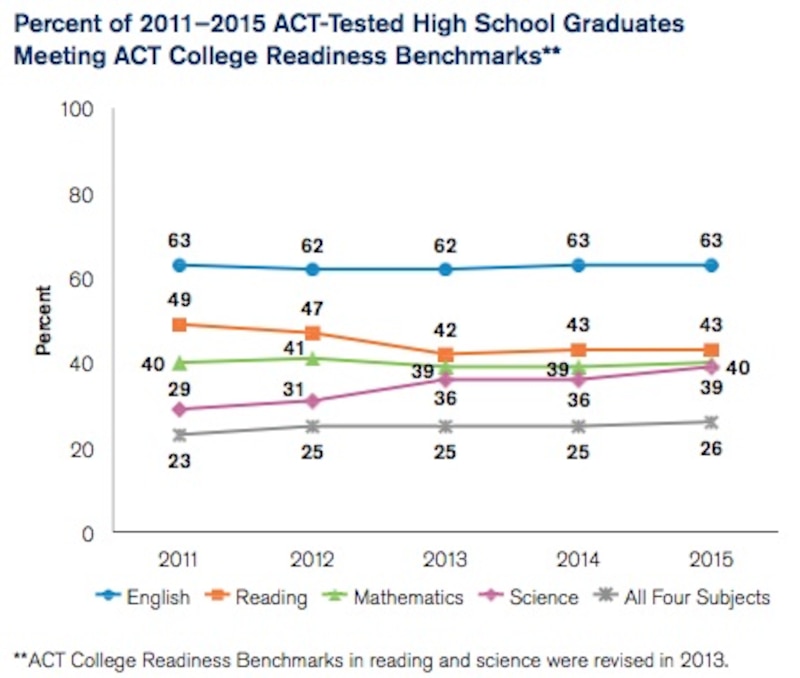
A third of Colorado students didn’t meet the benchmarks in any subject.
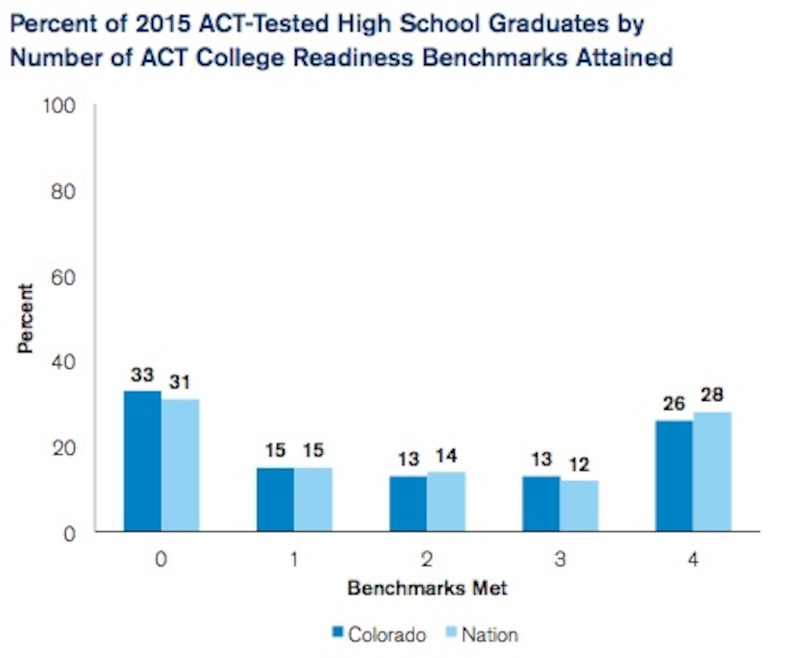
The study also reported that substantial numbers of students were close to the benchmarks. It found that 9 percent of students were within two points of meeting the benchmark for English. The numbers were 11 percent for reading, 8 percent for math and 11 percent for science.
Achievement gaps
The ACT’s analysis found familiar gaps between ethnic groups in college readiness. The majority of students who took the test, 53 percent, were white. Hispanic students were 27 percent of test takers. More than 57,000 students took the test.
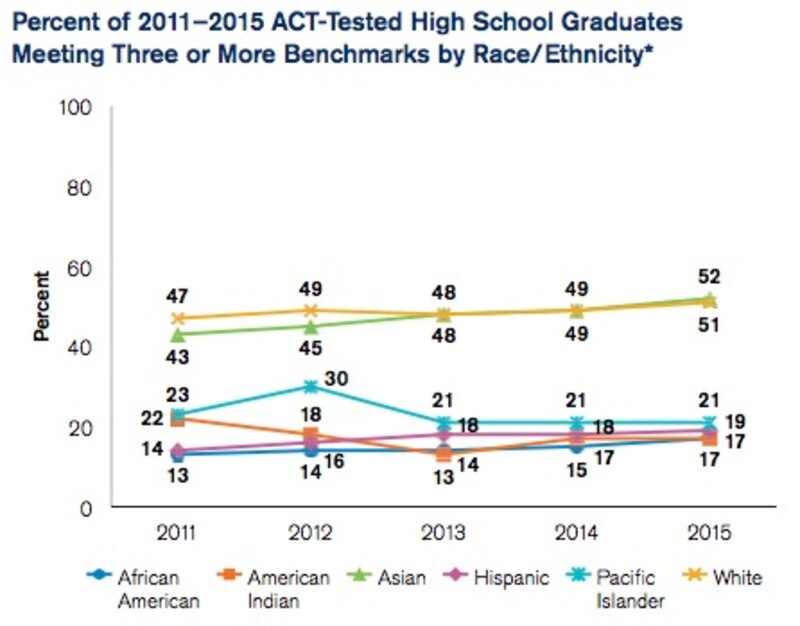
High school preparation
The report also examined the relationship between ACT scores and the kinds of classes students took in high school. “Students who take the recommended core curriculum are more likely to be ready for college or career than those who do not. A core curriculum is defined as four years of English and three years each of mathematics, social studies, and science,” according to the report.
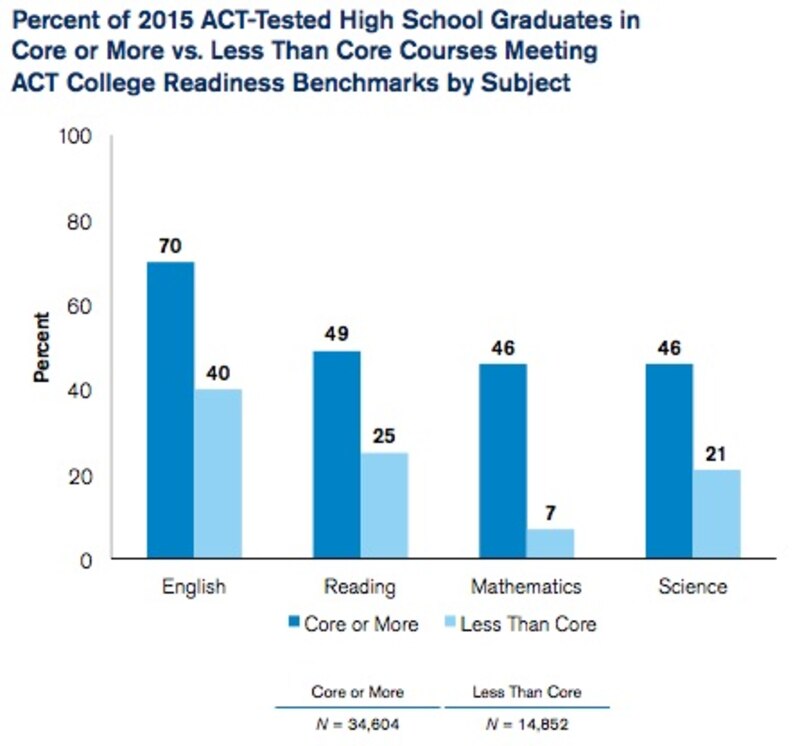
There’s a wealth of additional data in ACT’s Colorado full report below, including benchmark attainment based on students’ specific academic interests and non-academic factors that contribute to college readiness. There’s also a chart comparing Colorado results to those of other states.
Read the national report here, and get more detailed Colorado data in this document.


